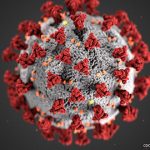Overall, there were no changes in anti-ENA screening for 89.4% of patients over the study period. … Rheumatologists could save money by not ordering repeat tests that, with some exceptions, don’t change over time, says Dr. Pope.
The Study
Researchers reviewed annual antibody and complement testing recorded in the charts of 130 lupus patients enrolled in the 1000 Canadian Faces of Lupus prospective registry. Specifically, they analyzed the annual seroconversion frequency for anti-ENA antibodies, anti-dsDNA and C3 and C4—from one test to the next and over the entire follow-up period, given one or multiple consistent results—and they calculated what it cost to detect the changes.
To be included in the study, subjects had to meet the ACR criteria for SLE and have a least one repeat test for all analyzed marker types at one year after the first test.
Overall, no changes in anti-ENA screening were reported for 89.4% of patients over the study period. Results for the remaining patients showed that 3.3% changed from negative to positive and 7.3% from positive to negative. Following a single anti-ENA screen, there was a 3.9% change from negative to positive tests and conversely a 4.2% change from positive to negative. After years of consecutive multiple consistent tests, the frequencies of changes progressively declined, according to the article.
In comparison, the other markers that were tested changed more frequently than anti-ENA. The rate of patients with no changes after the first test observed was 60.8% in anti-dsDNA, 83.3% in C3 and 75.4% in C4.
Cost for repeat testing of the anti-ENA screen was more than for the other biomarkers evaluated. Researchers estimated the Medicare cost at $621 to detect one anti-ENA change to positive one year after an initial negative screen and roughly $2,000 to $3,000 with each following year, according to the study article.
The Medicare cost to detect anti-dsDNA change to positive was estimated at roughly $238 after the first annual test and remained below $700 after four consistent years. The cost to detect low C3 and C4 was estimated just under $220 each, according to the article.
The authors note that repeat serologic monitoring of patients with SLE adds to healthcare costs. In particular, the research shows the costs to detect infrequent changes with anti-ENA testing were significant.
“Consistent with our clinical observations, we documented a low frequency of changes (<5% over the study) among anti-ENA autoantibodies in patients with SLE enrolled in a prospective cohort,” states the article. “These data suggest that it is not necessary to repeat anti-ENA testing during routine follow up, because the initial test result is unlikely to change.”

